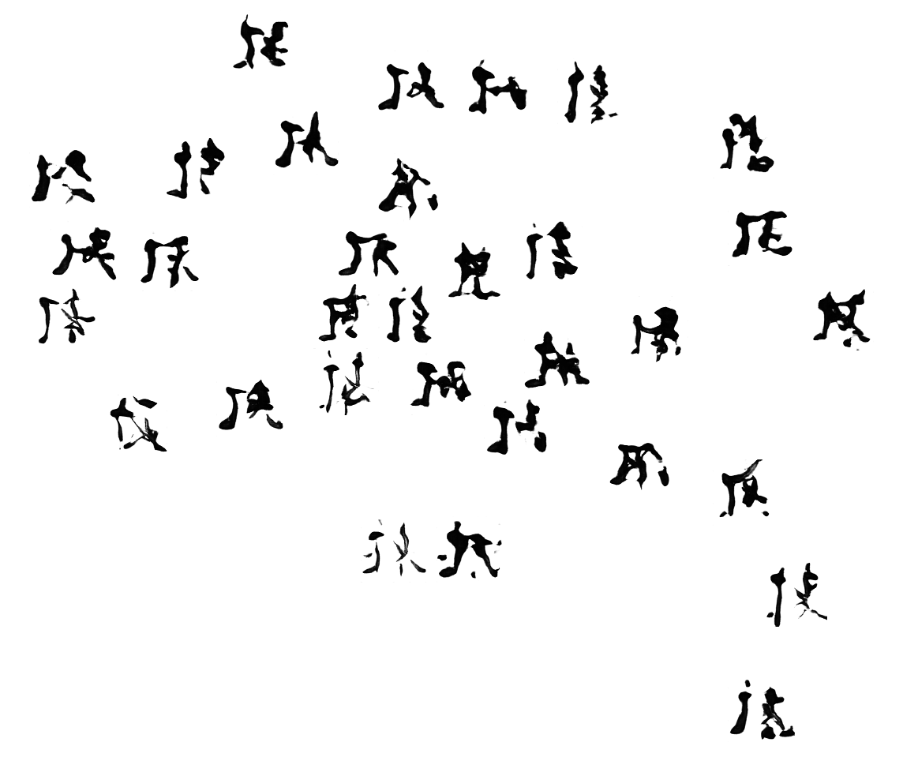-> Word Map & Pix2Dad's calligraphy Handbook
Hanzi, the written language of Chinese, is always a centered topic in art creation in the context of Chinese culture. People have been trying to explore the interrelationships between Chinese characters based on their visual or acoustic
similarity. An interesting example of mapping 8,615 Chinese character can be found here.
Excitingly, with RRPL, it is rather simple to calculate the structural complexities of Chinese characters and hence come up with a scoring system to compare them. The charts below show how the scoring system works: to understand those
numbers, one will need to understand the principles of RRPL - recursion and subdivision.
The scores increase each time when the recursion happens. The amount increased is equal to the horizontal/vertical division number at this recursion. Additionally, there is a number tracking how many RRPL strokes this character has. Note
that this number is not the same as the character's "real" number of strokes of when it is written by hand.





